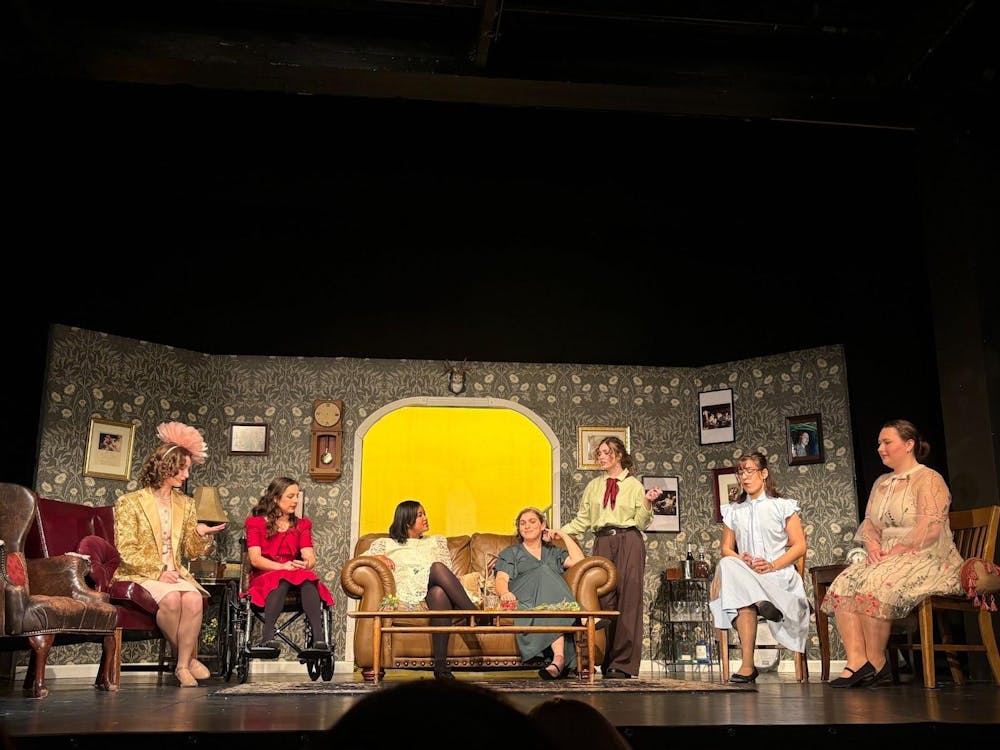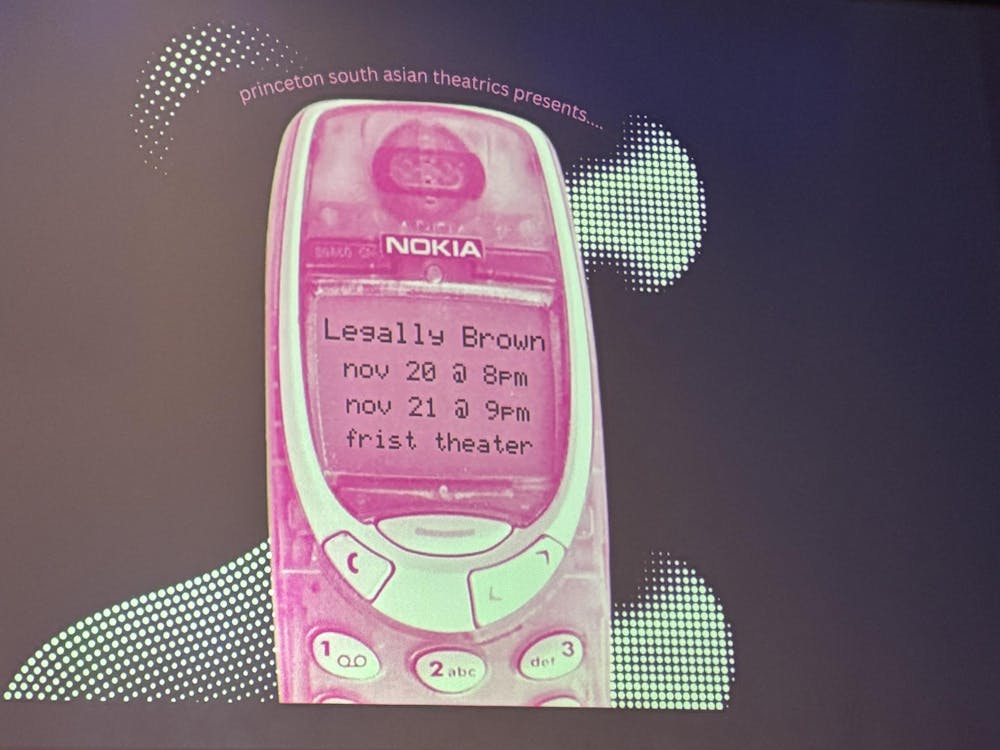“There’s a moment you know you’re fucked,” Melchior Gabor (Billy Cohen ’16) laments in the Lewis Center’s production of “Spring Awakening,” directed by Julia Hammer ’15. Set in late 19th-century Germany, the rock musical explores the teenage angst, suppressed sexuality and suicidal tendencies of a group of students, homing in on Gabor’s friendship with Moritz Stiefel (John Somers Fairchild ’15) and romantic relationship with Wendla Bergmann (Maddie Meyers ’17). Despite a compelling story and a few standout performances, many elements of the production are patchy.
Billy Cohen ’16 as Melchior Gabor leads the show with strong vocals and compelling characterization, and Maddie Meyers ’17 as Wendla Bergmann handles her difficult role deftly. Chemistry — a challenging feat — between Cohen and Meyers is sufficient.
Bits Sola ’15 as Adult Woman, a composite role of some five female roles, is the strongest performer in the production, differentiating consistentlybetween her characters. As Adult Man, a composite role of nine male roles, Ross Barron ’17, though lacking consistent character distinctions, excels in his performance as the stern Headmaster Knochenbruch and the bumbling Doctor von Brausepulver.
Connor Stonesifer ’16 as Otto Lämmermeier has one of the most memorable acting moments in the production when it is discovered that he had a sexual fantasy about his mother. Michaela Milgrom ’16 as Ilse Neumann is another standout performer, boasting the strongest vocals in the production.
With notable exceptions, however, including Maeve Brady ’15, Chris Murphy ’15, and Jared Brendon Hopper ’18, vocals are patchy throughout both in solos and group numbers. This may be due to a challenging score or unreliable sound, which often comes in and out randomly, failing to adequately support the performers.
Other technical elements of the production are just as spotty.
The set (Wesley Cornwell ’16) consists of tiered steps and platforms filling the back half of the blood-red stage, with an oversized, abstract metal tree extending from the stage floor towards the ceiling, forming a barrier between the band and the audience. Though the concept behind and use of the set are compelling, the capstone technical element — namely, the oversized tree — is far from aesthetically pleasing.
Lights (Mary Ellen Stebbins), though framing the story nicely, often fail to light the actors’ faces.

The quality of costume design (Nikki Delhomme) is drawn along gender lines. With identical navy blue suits for the students and a stunning ensemble for Adult Man, the costumes for the men are simply beautiful and well-suited to the story. Unfortunately, the same cannot be said for the costuming for the female actors. Featuring a smorgasbord of too-short dresses — some nearly puritan, some pseudo-pioneer, some outright bohemian — and an absurd combination of a gorgeous red bustled dress with a ragged apron, these costumes fail to adequately represent the period and fundamentally distract from the story.
Choreography (Adin Walker ’16) is at times highly innovative, as in “All That’s Known,” “The Bitch of Living” and “Totally Fucked” — and at times simply what is expected and even edges on being repetitive, as in “Touch Me” and “Mama Who Bore Me.” Overuse of the same movement across the stairs permeates the production. Nonetheless, choreographed moments like the repeated Latin verses in “All That’s Known” are captivating, suggesting that the Princeton University theater community could see more of such excellent work from Walker.
The single strongest technical element of the production is the band (conducted by Vince di Mura), which impeccably accompanies the actors.
Direction features many brilliant moments, including the use of lighting to represent a coffin and tableaus featuring the adults looming over the students. Other moments, as when Frau Bergmann tells her daughter how a child is conceived and when Wendla asks Melchior to beat her so that she can feel pain, are lacking motive. The use of suspended lighted globes — presumably stars — during the wake superimposes a layer of absurdity on the scene, detracting from its potency. While the opening number, “Mama Who Bore Me,” is rather underwhelming, the capstone finale, “Song of Purple Summer,” is phenomenal in vocals and use of the space.

Despite a few standout actors and a couple of outstanding musical numbers, because of spotty vocal performances and technical elements, “Spring Awakening” is a mixed bag.
The Lewis Center’s production of “Spring Awakening” runs March 12-13 at 8 p.m. in Berlind Theatre.
PROS: excellent use of the stage, compelling choreography, standout performances
CONS: spotty vocals, repetitive movement, offsetting technical elements
3.5 out of 5 Paws







